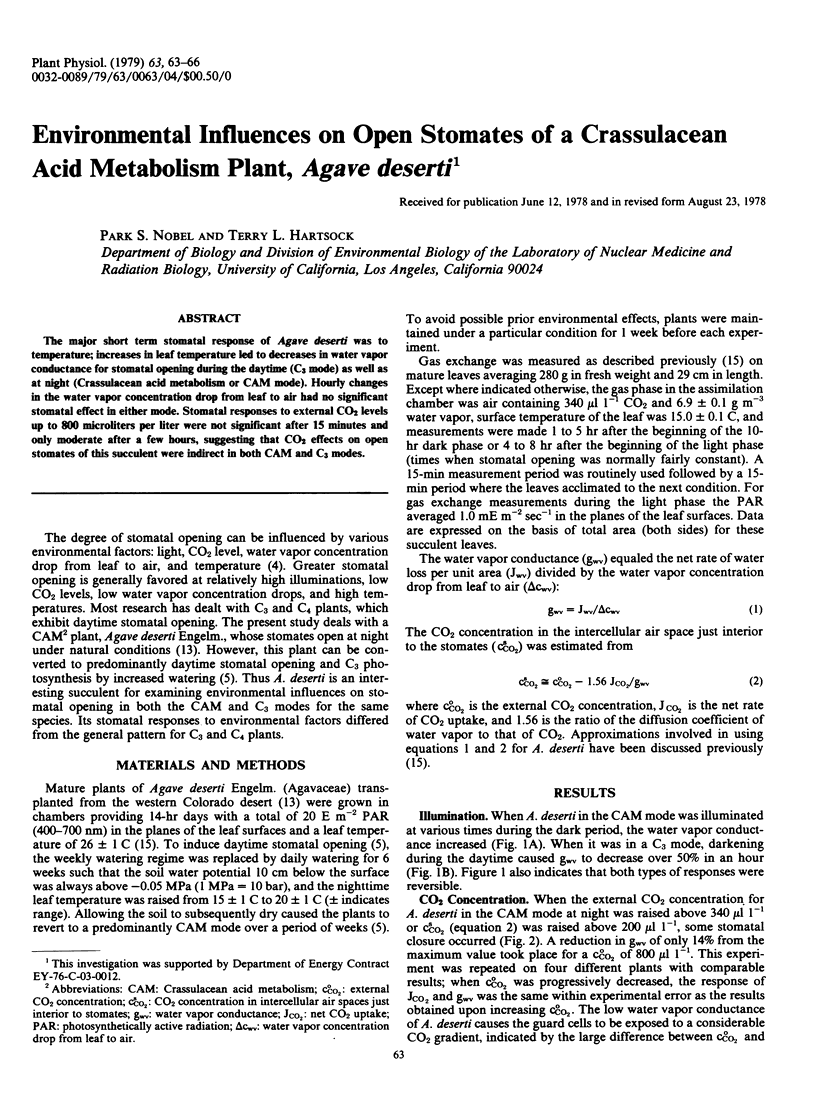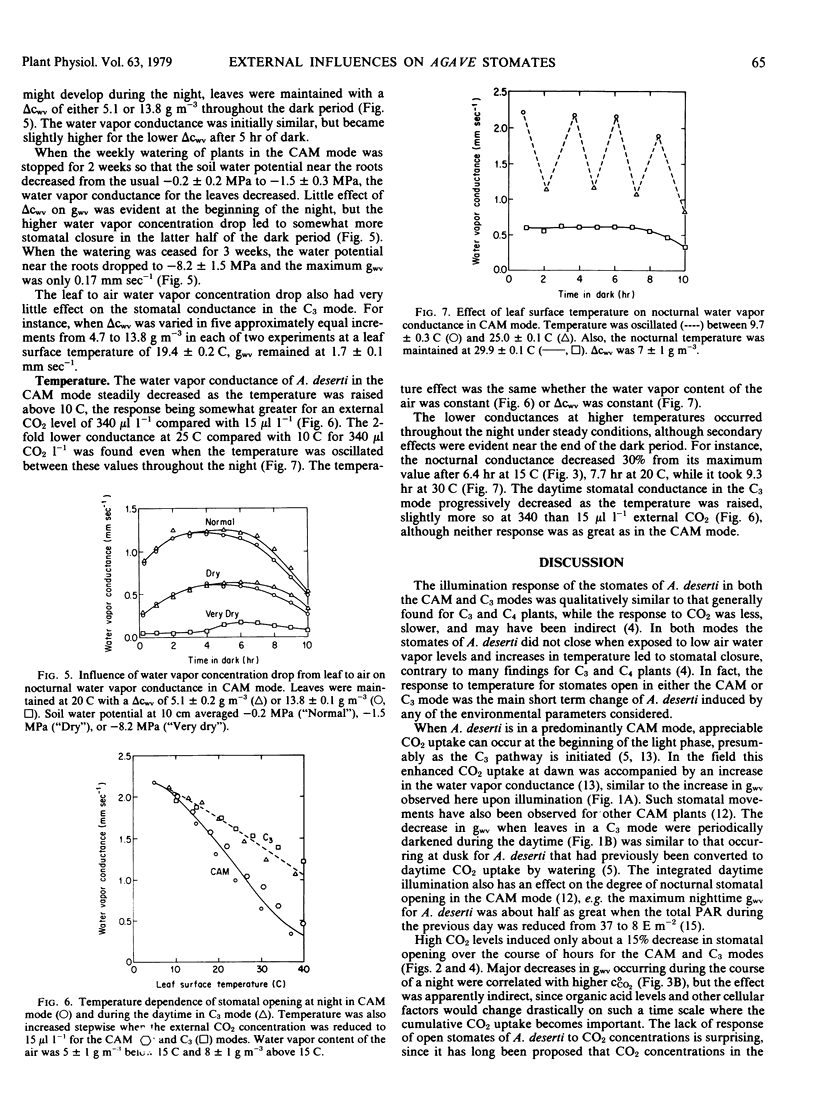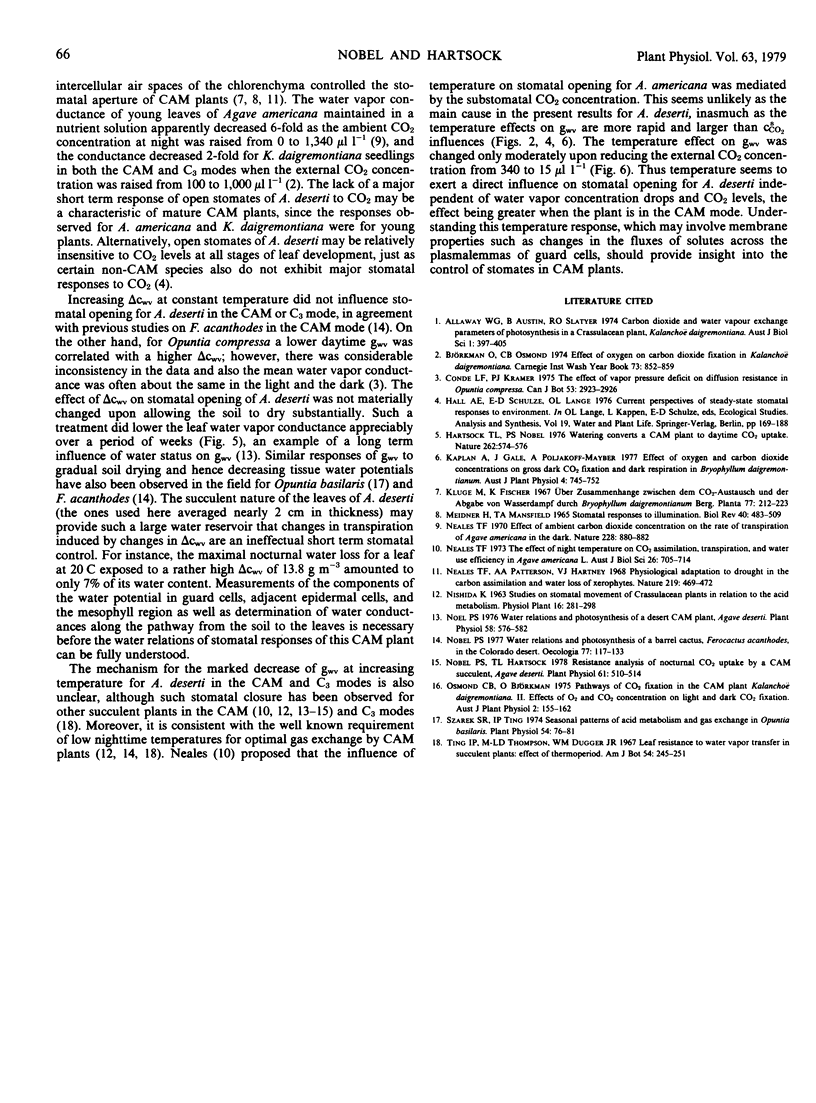Abstract
The major short term stomatal response of Agave deserti was to temperature; increases in leaf temperature led to decreases in water vapor conductance for stomatal opening during the daytime (C3 mode) as well as at night (Crassulacean acid metabolism or CAM mode). Hourly changes in the water vapor concentration drop from leaf to air had no significant stomatal effect in either mode. Stomatal responses to external CO2 levels up to 800 microliters per liter were not significant after 15 minutes and only moderate after a few hours, suggesting that CO2 effects on open stomates of this succulent were indirect in both CAM and C3 modes.
Full text
PDF



Selected References
These references are in PubMed. This may not be the complete list of references from this article.
- Neales T. F. Effect of ambient carbon dioxide concentration on the rate of transpiration of Agave americana in the dark. Nature. 1970 Nov 28;228(5274):880–882. doi: 10.1038/228880b0. [DOI] [PubMed] [Google Scholar]
- Nobel P. S., Hartsock T. L. Resistance Analysis of Nocturnal Carbon Dioxide Uptake by a Crassulacean Acid Metabolism Succulent, Agave deserti. Plant Physiol. 1978 Apr;61(4):510–514. doi: 10.1104/pp.61.4.510. [DOI] [PMC free article] [PubMed] [Google Scholar]
- Nobel P. S. Water Relations and Photosynthesis of a Desert CAM Plant, Agave deserti. Plant Physiol. 1976 Oct;58(4):576–582. doi: 10.1104/pp.58.4.576. [DOI] [PMC free article] [PubMed] [Google Scholar]
- Szarek S. R., Ting I. P. Seasonal Patterns of Acid Metabolism and Gas Exchange in Opuntia basilaris. Plant Physiol. 1974 Jul;54(1):76–81. doi: 10.1104/pp.54.1.76. [DOI] [PMC free article] [PubMed] [Google Scholar]


